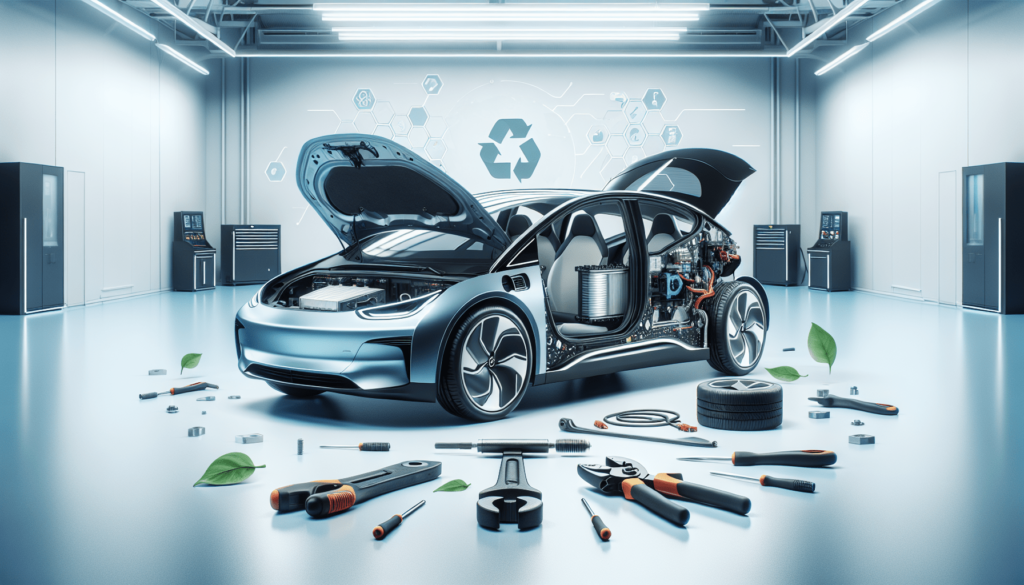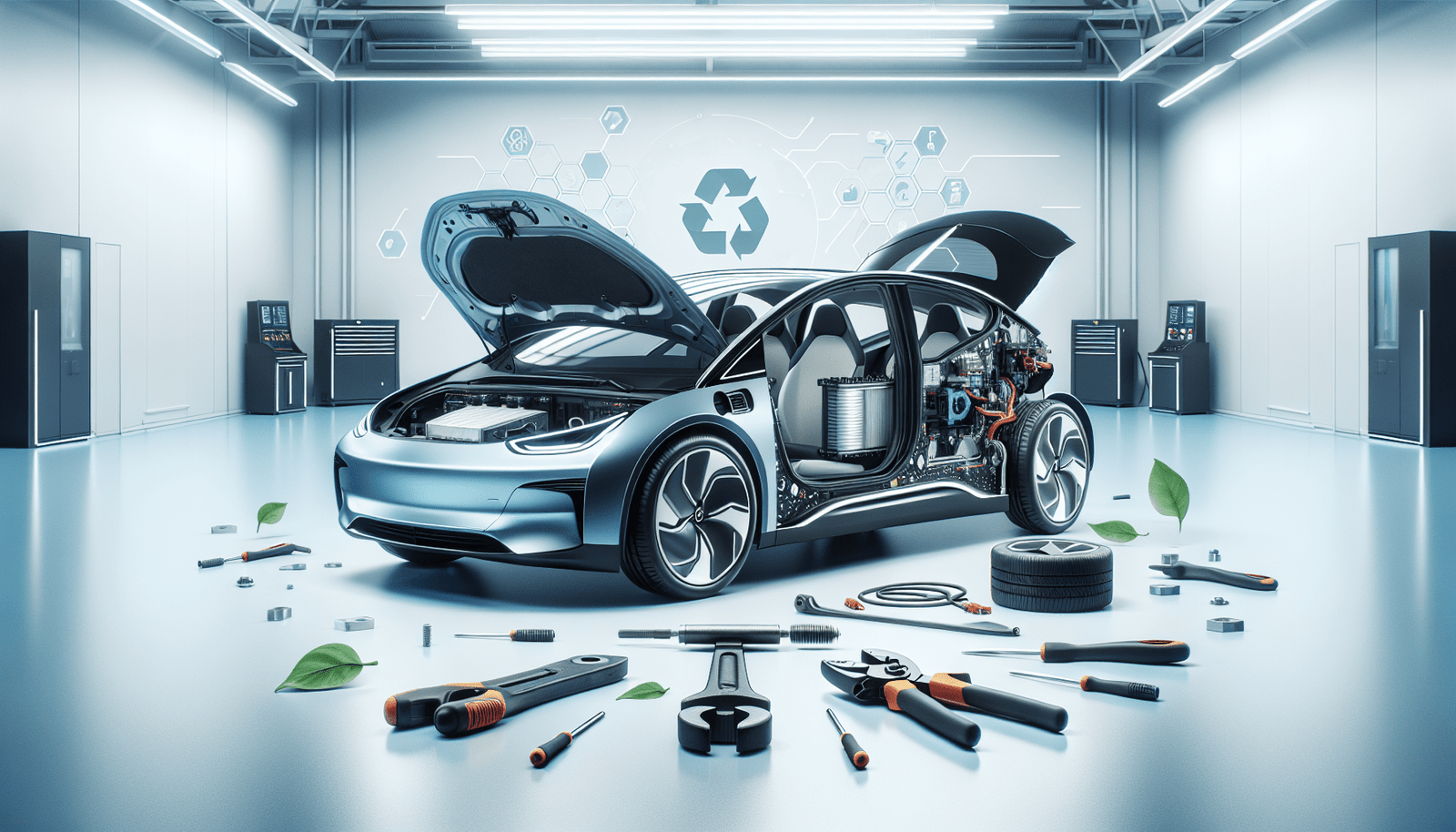Imagine you’ve finally made the leap and got yourself an electric car. You’re cruising down the road, enjoying the quiet hum of your eco-friendly ride, and then it hits you – how do you take care of this thing? Unlike traditional gasoline-powered vehicles, electric cars come with their own set of maintenance needs. So, let’s break it down for you. Taking care of your electric vehicle (EV) isn’t as daunting as it might seem. From battery care to brake systems, there are a few key areas you’ll want to keep an eye on to ensure your ride stays smooth and efficient. Buckle up, because we’re about to get into the nuts and bolts of electric car maintenance!
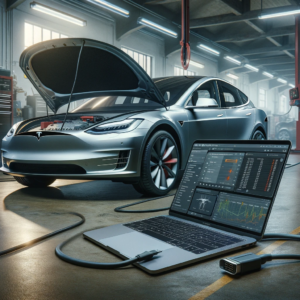
Battery Care and Maintenance
When it comes to electric vehicles (EVs), the battery isn’t just another part; it’s the heart of your car. Taking care of it ensures not only longevity but also consistent and reliable performance. Here’s how you can keep the battery in top condition.
Monitoring battery health
Just like you keep an eye on your own health, monitoring your battery’s health is crucial. Most modern electric vehicles offer a built-in way to check battery health through the vehicle’s dashboard or an associated app. Keeping an eye on this can alert you to potential issues before they become serious.
Understanding the impact of temperature on battery life
You’ve probably noticed that your smartphone’s battery drains faster in extreme cold or heat. Well, your EV’s battery feels the same way. Extreme temperatures can shorten your battery’s lifespan and reduce its range. Whenever possible, park your car in the shade or a garage to protect it from the harsh elements.
Recommended charging habits to maximize battery longevity
To keep your battery healthy, aim to keep it between 20% and 80% charge. Constantly charging to 100% can strain the battery, while letting it run too low too often can also be harmful. Think of it as keeping yourself well-fed but not overeating or starving.
When to consider battery replacement
Despite your best efforts, batteries don’t last forever. If you notice a significant drop in range or if your battery health monitor is showing signs of serious decline, it might be time for a replacement. This is typically after many years of use, so it’s not something you’ll need to worry about often.
Electric Motor Maintenance
The electric motor is what puts the “go” in your vehicle. Mercifully, it’s a lot simpler than an internal combustion engine, but it still needs a bit of TLC.
Regular inspections for wear and tear
Even though electric motors have fewer moving parts, they’re not immune to wear and tear. Regular inspections can help catch any potential issues early, before they lead to bigger problems.
Lubrication requirements
While your EV’s motor needs less maintenance than a traditional engine, certain parts may still require lubrication to keep everything running smoothly. Check your owner’s manual for specifics on lubrication requirements and intervals.
Detecting and addressing unusual noises or vibrations
If your ride starts to hum, whistle, or vibrate in ways it shouldn’t, don’t ignore it. These could be signs of motor issues, and catching them early can save you time, money, and headache.
Understanding service intervals
Your EV’s manual will spell out how often you need to service the electric motor. Sticking to these intervals ensures your vehicle remains efficient and responsive.
Brake System Care
Brakes are your first line of defense while on the road, and in EVs, they come with a bit of a twist thanks to regenerative braking systems.
Regenerative braking system maintenance
The regenerative braking system extends brake life by using the motor to slow the car, recharging the battery in the process. However, this doesn’t mean you can ignore brake maintenance. Regular checks are still necessary.
Brake pad and disc inspection
Even with less wear from regenerative braking, brake pads and discs still need regular inspections for wear and tear. Catching issues early can prevent more significant problems down the road.
Fluid level checks and replacements
Brake fluid is the lifeblood of your brake system. Over time, it can become contaminated and degrade, reducing the effectiveness of your brakes. Checking and replacing it as recommended by your manufacturer is key.
Addressing electronic brake system warnings
If your EV’s dashboard lights up with a brake system warning, don’t delay in addressing it. These systems are complex, and warnings can indicate a range of issues from minor to serious.
Cooling System Maintenance
Yes, even electric vehicles need cooling systems. These systems keep your battery and electric motor within optimal temperature ranges.
Checking coolant levels for battery and electric motor
Regular checks of your coolant levels can help avoid overheating, the mortal enemy of performance and efficiency. Low levels might indicate leaks that need prompt attention.
Coolant replacement intervals
Over time, coolant can degrade and become less effective. Your vehicle’s manual will recommend intervals for replacing it to ensure your systems stay cool under pressure.
Flushing the cooling system
Periodically flushing the cooling system helps remove debris and contaminants that could hinder cooling efficiency. Again, your manufacturer will provide guidelines on how often this should be done.
Inspecting for leaks or damage in the cooling system
Leaks or damage can lead to an overheated battery or motor, sharply reducing their lifespan and potentially leaving you stranded. Regular inspections can catch such issues early.
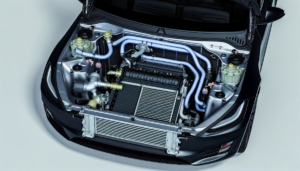
Tire Care and Maintenance
Tires are where your electric dream meets the road. Keeping them in good shape is essential for safety, performance, and efficiency.
Regular tire inspections for wear and tear
Frequent checks for wear, tears, or other damage can help ensure your tires are always road-ready. Pay special attention to tread depth, and don’t forget to check for nails or other debris.
Importance of tire rotation for even wear
Rotating your tires according to the schedule in your vehicle’s manual helps ensure even wear, extending their life and maintaining good handling.
Keeping tires properly inflated
Proper inflation is crucial for safety, handling, and even range. Under-inflated tires create more resistance, making your EV work harder and reducing its range.
Choosing the right tires for an electric vehicle
EVs are heavier than their combustion counterparts, thanks to their batteries. Choosing tires designed to handle this weight can improve performance and reduce wear.
Software Updates
Software plays a significant role in modern EVs, impacting everything from battery management to in-car entertainment.
Staying informed on available software updates
Manufacturers often release updates that can improve performance, add features, or fix bugs. Keeping your software up to date ensures you’re getting the most out of your vehicle.
Understanding how software updates improve vehicle performance and safety
Software updates can optimize how your EV uses its battery, potentially extending its life and range. Updates can also enhance safety features, keeping you safer on the road.
The process for installing software updates
Many EVs allow for over-the-air updates, meaning you can upgrade your software without a trip to the dealership. For those that require a manual update, your dealer can help.
Troubleshooting software update issues
If you encounter issues with a software update, such as features not working as expected, contact your dealer or manufacturer. They can help resolve any problems.
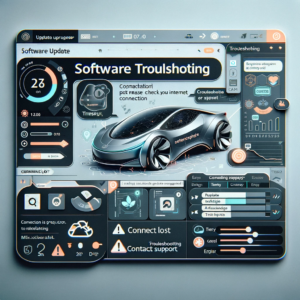
Electrical System Checks
The electrical system is the nerve center of your EV, and keeping it in good working order is essential for trouble-free driving.
Inspection of charging port and cables
Regular inspections ensure your charging setup is always ready to go. Look for signs of wear or damage, and clean the charging port to ensure a good connection.
Testing onboard diagnostics for electrical issues
Many EVs come equipped with diagnostics that can alert you to electrical issues. Familiarizing yourself with these can help you catch and address problems early.
Maintenance of high-voltage cables and connections
High-voltage cables and connections should be inspected regularly for signs of wear or damage. Dealing with high-voltage systems can be dangerous, so consider having a professional perform these checks.
Ensuring headlights, taillights, and internal electronics function properly
Regular checks of your lights and internal electronics help ensure your safety and convenience. Replacing faulty bulbs or addressing electronic issues promptly keeps everything running smoothly.
Cabin Air Filter Replacement
The cabin air filter keeps the air inside your vehicle clean, but it needs regular attention to do its job effectively.
The importance of cabin air filter maintenance
A clean cabin air filter improves air quality inside your car, protecting you and your passengers from pollutants and allergens.
How to replace the cabin air filter
Replacing your cabin air filter is typically a straightforward process. Your vehicle’s manual will guide you through the steps, which usually involve accessing the filter housing under the dashboard or hood.
Recommended replacement intervals
Most manufacturers recommend replacing the cabin air filter every 12 to 15 months, but check your manual for specific guidance for your vehicle.
Signs that the cabin air filter needs replacement
If you notice reduced airflow from your vents, an increase in noise from the fan, or an unpleasant smell, it might be time to replace your cabin air filter.
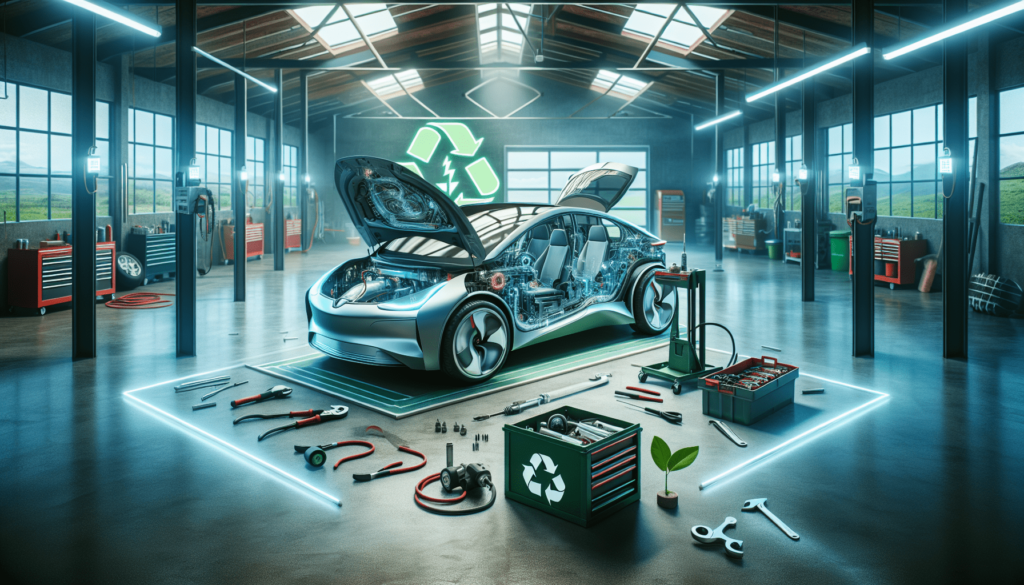
Wiper Blades and Windshield Care
Visibility is non-negotiable when it comes to safe driving. Here’s how to keep your view clear.
Inspecting and replacing wiper blades as needed
Worn or damaged wiper blades can leave streaks, reducing visibility. Inspect them regularly and replace them as needed, typically once a year.
Maintaining a clean windshield for safety
A clean windshield is vital for safe driving, especially at night. Regular cleaning removes dirt, bugs, and other debris that can impair your view.
Checking windshield washer fluid levels and refilling
Keeping your windshield washer fluid topped up ensures you can always clear away dirt and grime. Check the level regularly and refill as needed.
Addressing chips or cracks in the windshield promptly
Chips or cracks can quickly grow, impairing visibility and potentially leading to a costly replacement. Addressing them promptly can often save you time and money.
Exterior and Interior Cleaning
Keeping your EV clean isn’t just about looking good; it’s about preservation, safety, and efficiency.
The significance of regular vehicle cleaning to prevent wear
Dirt and grime can wear down your paint and undercarriage over time. Regular washing helps preserve these surfaces and prevent rust and corrosion.
Recommended products and practices for exterior cleaning
Use cleaners designed for automotive use to avoid damaging your paint or trim. Also, consider using a microfiber cloth or mitt to prevent scratching.
Interiors cleaning, focusing on electronic components
Be careful when cleaning around electronic components. Use lightly dampened cloths and avoid spraying cleaners directly on buttons or screens.
Special considerations for cleaning EV-specific components
Pay special attention to cleaning around charging ports and ensure they’re dry before plugging in. Also, avoid high-pressure washes near sensors or cameras to prevent damage.
Caring for your electric vehicle might seem daunting at first, but with regular attention and maintenance, you can keep it running smoothly and efficiently for years to come.
